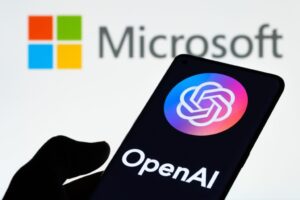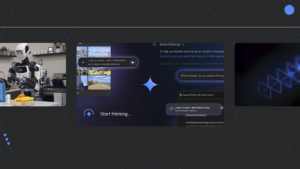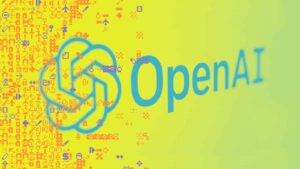2025 Showdown: The Race for Dominance in Generative AI among Google, OpenAI, and Anthropic

As we move into 2025 and beyond, generative AI is at the forefront of technological advancements. Leading companies like OpenAI, Google, and Anthropic are fiercely competing for dominance in this rapidly evolving field. With the aim of enhancing the way we work, create, and engage with technology, these players are not just racing for market share; they are shaping how generative AI will impact various sectors including government, business, and everyday users.
As these companies craft the future of generative AI applications, we are seeing significant advancements. From multimodal interfaces to autonomous agents, 2025 is projected to be a year of immense growth and personalization in AI technology.
OpenAI: Leading the Charge with GPT-4.1 and Beyond
OpenAI continues to be a key player in this AI revolution, having recently released GPT-4.1 in April 2025. This update includes lighter versions such as GPT-4.1 Mini and Nano, aimed at improving speed, cost-efficiency, and adaptability for mobile devices. These models maintain excellent performance in language understanding, summarization, and software coding.
Additionally, OpenAI introduced the o4-mini, a multimodal model capable of processing images and performing advanced reasoning tasks. This allows for useful applications, like analyzing whiteboard diagrams or interpreting complex charts during AI-assisted conversations, essential in fields like education, design, and architecture.
Looking ahead, GPT-5, informally called “Arrakis” or “Gobi,” is expected in late 2025 or early 2026. Rumors suggest it will exceed 52 trillion parameters, enriching multimodal interactions (text, images, video, and possibly audio) while offering extended contextual memory for a more intuitive, personalized experience and minimizing errors.
Google’s Gemini 2.5: The Future of Thinking Machines
Google DeepMind is not to be left behind. They have made considerable progress with their Gemini platforms, launching version 2.5, recognized as the “most intelligent model yet.” Gemini 2.5 Pro incorporates deep chain-of-thought reasoning, enabling the model to navigate complex semantic problems to generate responses.
Gemini’s multimodality allows it to handle text, images, and code inputs, equipped with a million-token context window. Users can input extensive texts such as entire documents or large code bases and still receive accurate, contextually relevant feedback.
Moreover, Gemini is designed to optimize computational resources based on the task’s requirements, balancing cost, speed, and quality effectively, which is vital for any enterprise. Its integration across Android devices, Chrome, and Google Workspace gives it a competitive edge, especially in the EU where regulatory compliance is crucial.
Anthropic’s Claude 3.5: Guarding Ethical Standards
Emerging as a notable contender, Anthropic is rapidly gaining traction with its Claude series, which emphasizes safety, user alignment, and transparency. The latest release, Claude 3.5, boasts improved memory and real-world knowledge, along with multimodal input capabilities.
Claude 3.5 can handle a vast context of 200,000 tokens and access real-time web information, making it suited for research, content creation, and customer support. What sets Anthropic apart is its unique training approach known as Constitutional AI, which aligns model behavior with ethical principles rather than just user-driven fine-tuning. This approach is particularly beneficial in fields such as law and healthcare, where trust and clarity are paramount.
Comparison of Leading Generative AI Models in 2025
| Feature | OpenAI (GPT-4.1) | Google (Gemini 2.5) | Anthropic (Claude 3.5) |
| Multimodal Support | Text, Image, Audio | Text, Image, Audio | Text, Image |
| Context Length | Up to 1 million tokens | Up to 1 million tokens | 200,000 tokens |
| Reasoning Capabilities | Advanced chain-of-thought | Internal “thinking model” | Constitutional AI guidance |
| Integration | ChatGPT, API, iOS/Android | Google Workspace, Android | Claude.ai, API integrations |
| Special Features | Smart agents, dev tools | Thinking budget, Workspace AI | Real-time research, ethics-first |
| AI Philosophy | Innovation and openness | Performance and usability | Safety and alignment |
Emerging Trends in Generative AI for 2025
This year is set to bring remarkable shifts within the generative AI landscape.
1. AI Agents as Collaborators
AI models like GPT-3 can now undertake complete workflows, ranging from design to coding, hinting at a future where autonomous AI workers are commonplace.
2. Embracing Multimodality
Current models can interpret various types of input, such as images and voices, enhancing interactive learning tools and medical diagnostics.
3. Prioritizing Privacy with On-Device AI
With rising privacy concerns and strict regulations, on-device AI solutions like OpenAI’s GPT-4.1 Nano and Google’s Gemini Flash focus on powerful capabilities without heavy reliance on cloud computing.
4. Enhanced Customization via APIs
More businesses are crafting unique AI solutions using foundational models, benefiting from OpenAI’s Custom GPTs and Model Garden for precision in development.
The German AI Landscape: Innovation and Responsibility
As the largest economy in Europe, Germany is heavily investing in AI research and development, focusing on responsible practices. The country is fostering a supportive ecosystem through public-private partnerships and is promoting startups specializing in ethical AI. With organizations like KIPARK and various academic centers in cities like Berlin, Munich, and Stuttgart, Germany is becoming a leader in areas like autonomous vehicles and industrial automation.
Local companies are effectively implementing generative AI across logistics, manufacturing, and customer support, navigating the regulatory framework with expertise. Collaborations with international tech firms are further driving innovation while ensuring compliance.






